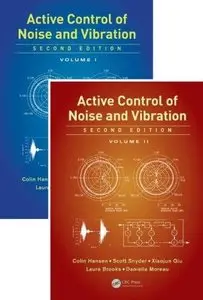Active Control of Noise and Vibration, Second Edition By Colin Hansen
2012 | 3106 Pages | ISBN: 0415590612 | PDF | 29 MB
2012 | 3106 Pages | ISBN: 0415590612 | PDF | 29 MB
Since the publication of the first edition, considerable progress has been made in the development and application of active noise control (ANC) systems, particularly in the propeller aircraft and automotive industries. Treating the active control of both sound and vibration in a unified way, this second edition of Active Control of Noise and Vibration continues to combine coverage of fundamental principles with the most recent theoretical and practical developments. What's New in This Edition Revised, expanded, and updated information in every chapter Advances in feedforward control algorithms, DSP hardware, and applications Practical application examples of active control of noise propagating in ducts The use of a sound intensity cost function, model reference control, sensing radiation modes, modal filtering, and a comparison of the effectiveness of various sensing strategies New material on feedback control of sound transmission into enclosed spaces New material on model uncertainty, experimental determination of the system model, optimization of the truncated model, collocated actuators and sensors, biologically inspired control, and a discussion of centralised versus de-centralised control A completely revised chapter on control system implementation New material on parametric array loudspeakers, turbulence filtering, and virtual sensing More material on smart structures, electrorheological fluids, and magnetorheological fluids Integrating the related disciplines of active noise control and active vibration control, this comprehensive two-volume set explains how to design and implement successful active control systems in practice. It also details the pitfalls one must avoid to ensure a reliable and stable system



